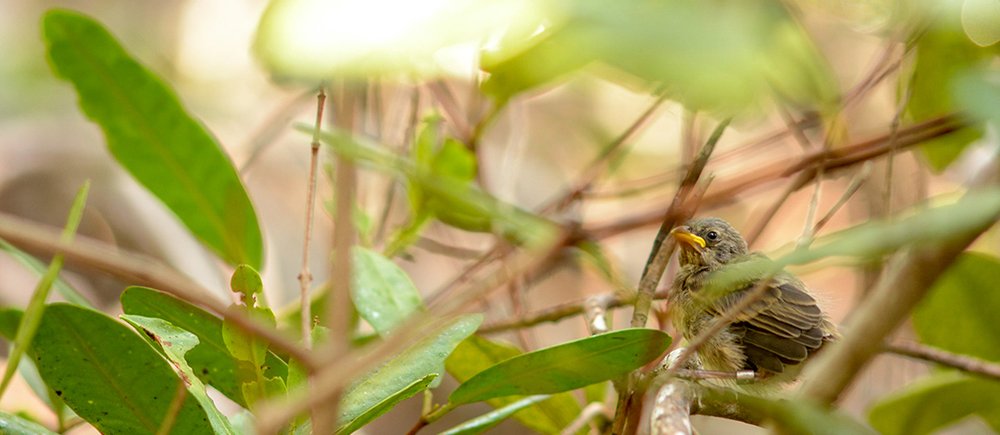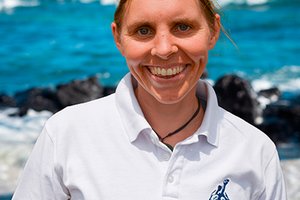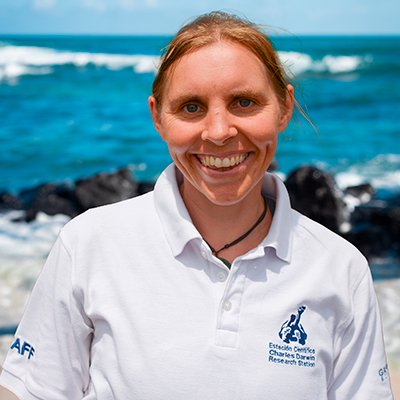
In early 2020 at Playa Tortuga Negra, Isabela Island, during the shortened field season as a result of the COVID-19 pandemic, researchers from the Charles Darwin Foundation (CDF) found 14 mangrove finch (Camarhynchus heliobates) breeding pairs, a slight increase from previous seasons. Amongst them, the team identified a male mangrove finch that was banded in December 2006. This finch was observed again following several years of not having been found. It was seen singing and building a nest paired with a female that fledged from an insecticide-treated nest in 2018. Nests are treated to protect nestlings in their natural habitat from the threat they face from introduced Philornis downsi fly larvae parasitism.
Francesca Cunninghame, a CDF scientist and leader of the Mangrove Finch Project said, “We were delighted to observe the old male again, especially considering that he is over 14 years old.” She added, “From the 2020 breeding season monitoring results we can confirm at the time we had to leave the field that there were four nests with eggs, five with nestlings and unfortunately, due to a range of factors, five nests that had failed early in the season."
Mangrove finches, especially the nestlings, now depend on the field team’s visits during the breeding season for their survival. This is due to the need to reduce nestling mortality from Philornis downsi parasitism, making the nestlings reliant on the careful injection of insecticide into the base of their nests.
Additionally, together with a ranger from the Galapagos National Park Directorate, introduced rat control was carried out across all the occupied mangrove finch breeding habitat.
In early March the project team had to stop all their field activities due to the COVID-19 pandemic and associated restrictions, which caused the team to leave the field site five weeks before the end of the breeding season. This resulted in several conservation activities being suspended including the full insecticide nest treatments and accompanying supplementary chick feeding, both of which are required to increase nestling survival. Other activities that were not able to be completed include full season population monitoring, baseline mangrove habitat assessment, and supplementary feeding trials to increase breeding in the adult population.
“In some cases, the COVID-19 pandemic is giving the natural world some breathing space and providing an increased area for wildlife. However, in the case of the mangrove finch, the impacts of the pandemic are working against the species. Like several threatened species, these finches now urgently depend on human support for their survival,” added Cunninghame.
-ENDS-







